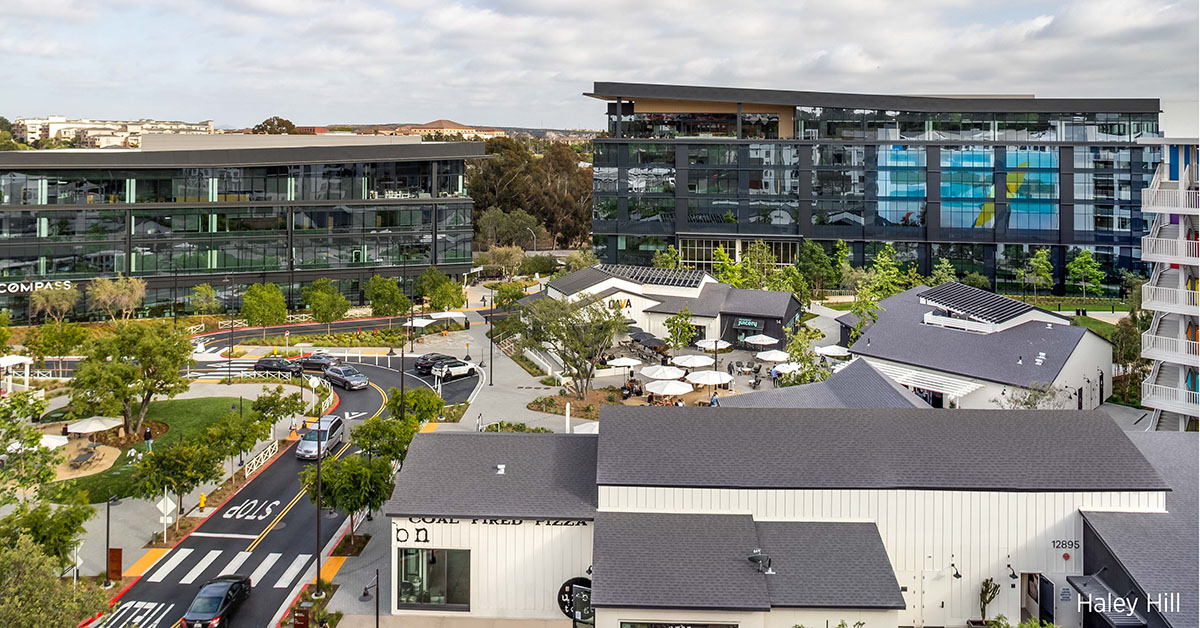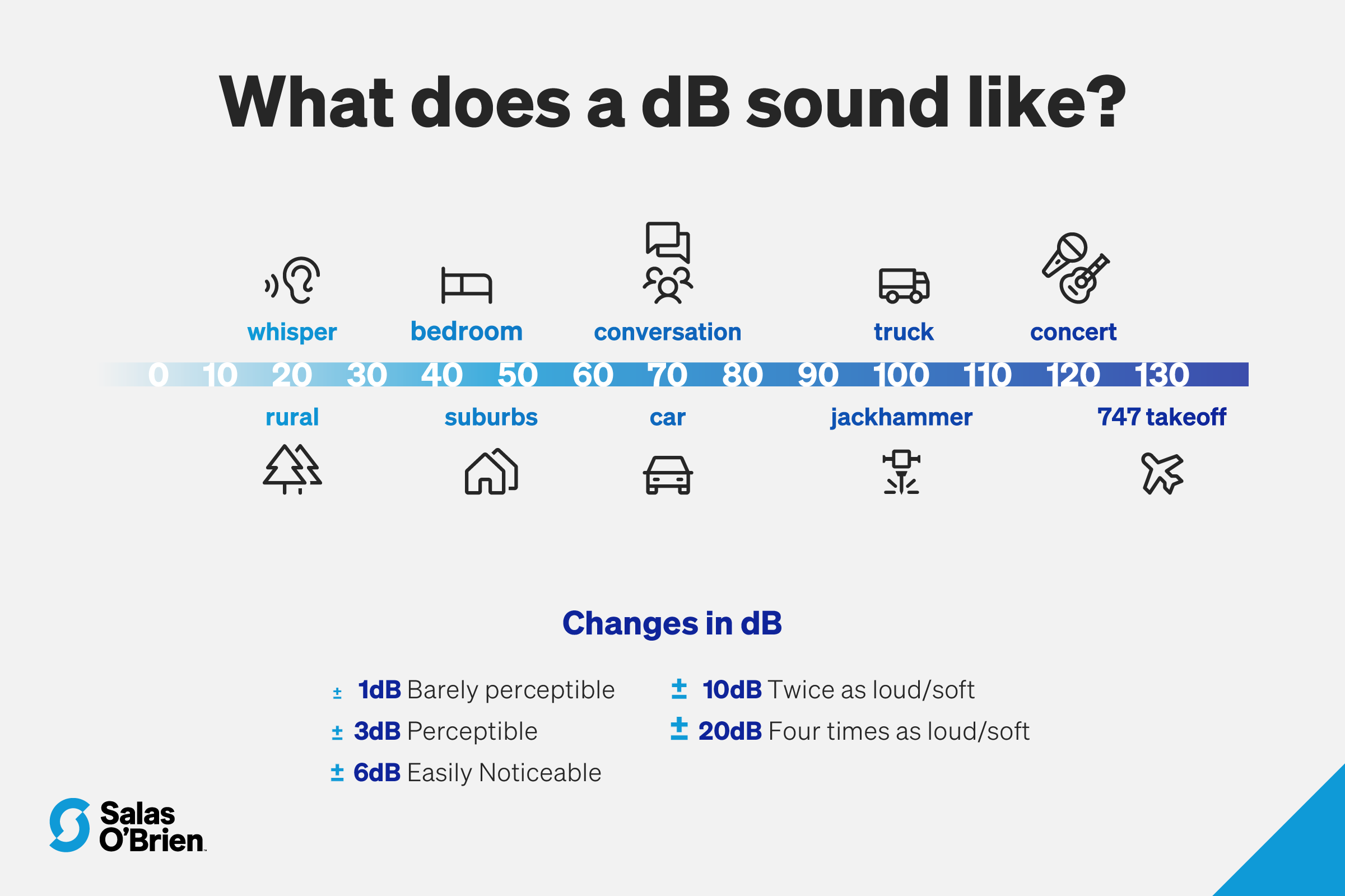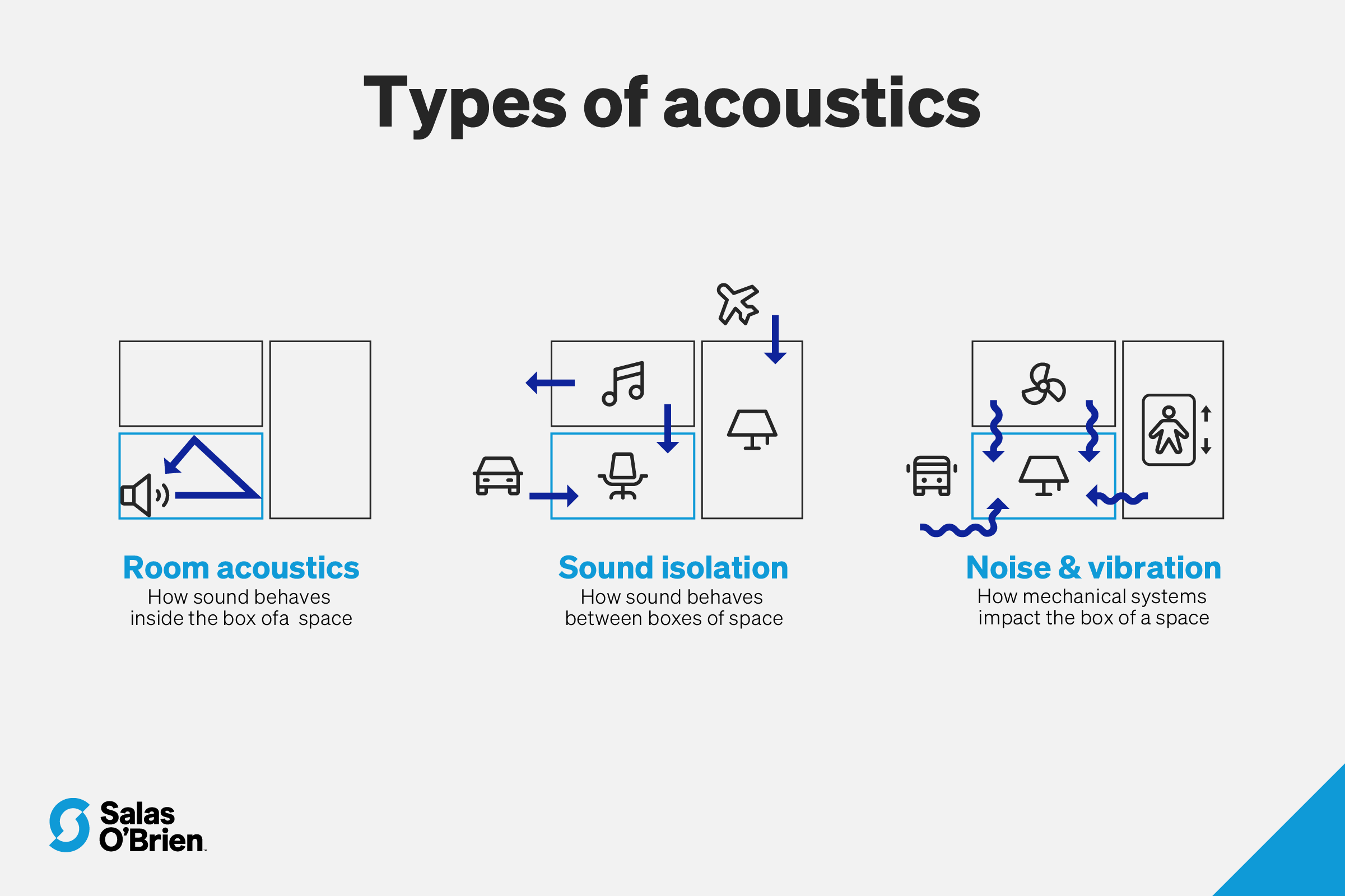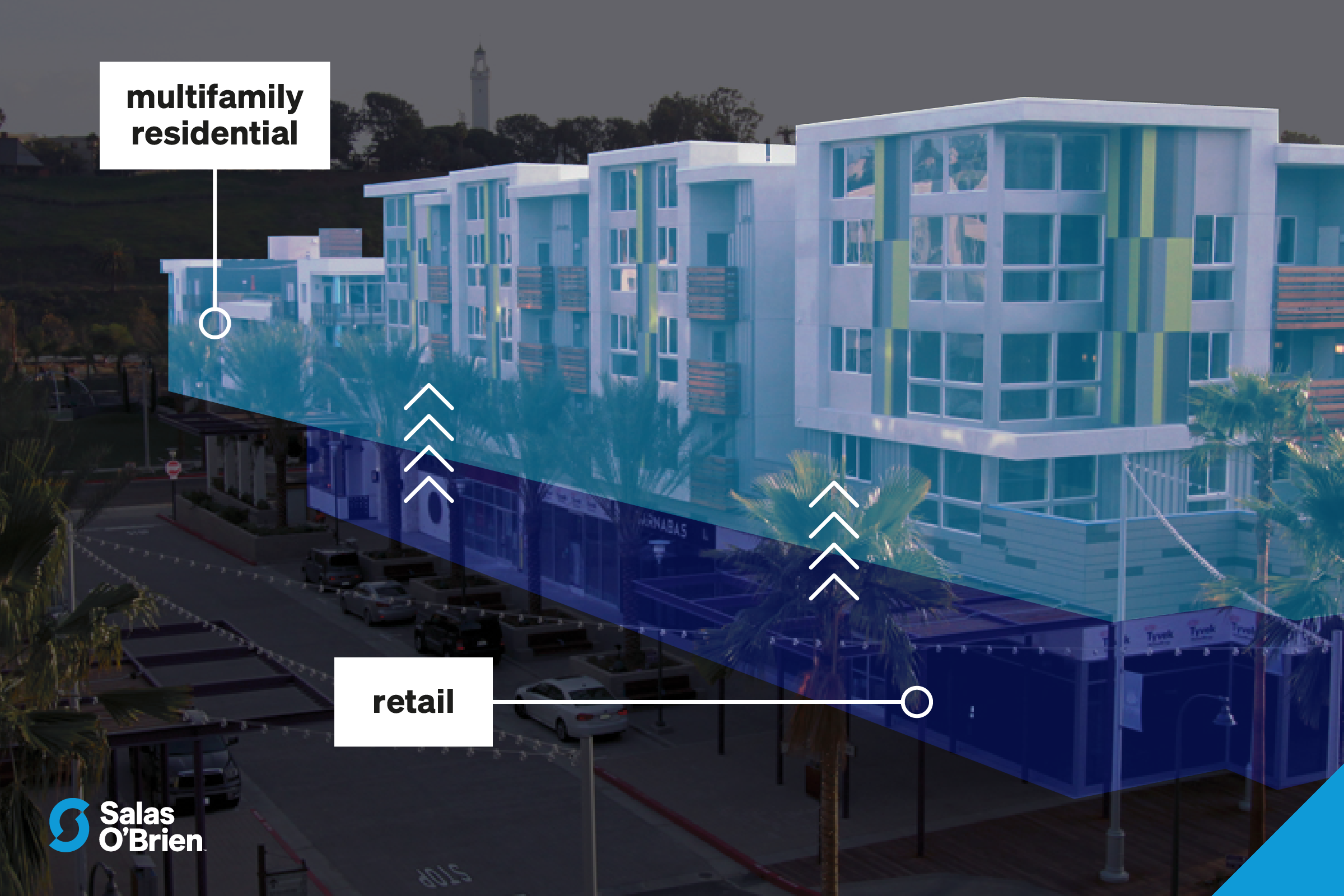News & Insights
Managing noise: changing environmental acoustics in urban areas
This article shares the challenges of urban noise and how environmental acoustics can effectively address them through compliance with noise regulations, noise mitigation strategies, and advanced engineering techniques

Urban noise is a persistent problem that creates headaches for residents and businesses alike. Environmental acoustics tackle this issue by managing noise levels, ensuring compliance with noise ordinances, and creating more comfortable living spaces through mitigation.
We met with some of our acoustic design experts to explore these issues and sophisticated engineering techniques that can help reduce noise pollution and enhance the quality of life in our fast-evolving urban settings.
What are the main sources of noise pollution in urban environments, and how do they impact the overall acoustic environment?
Urban environments are each unique, subject to varying levels of different types of noises. Sources include: business activities such as manufacturing, transportation, shipping, and loading; building-related noises such as HVAC systems, power generation, construction, repair work, and landscape maintenance; and the vibrant essence of urban life encompassing laughter, music, conversations, and entertainment.
While cities are usually zoned single-use, the trend toward mixed-use development is creating more complex adjacencies with different types of noise-producing activities closer together. And while a certain noise level can create a positive reaction as the inhabitants experience a vibrant and energetic atmosphere, in other cases, these sounds can create disruptions to work, family life, rest, and sleep. Not only that, but noise exposure over time can create strain on focus and concentration.

Are there any regulations or guidelines in place to manage noise pollution in urban areas? If so, what are they and how effective are they?
Guidelines are driven by jurisdiction. Large cities usually have the most prescriptive detail in their noise ordinances, but county, state/province, federal, and International Building Code (IBC) ordinances/rules/regulations can also apply. (For any residential space, IBC has to be met for sound transmission between spaces, and the State of California has strong guidance for most building types.)
Rating systems such as LEED, WELL, and CHPS include acoustic guidelines for sound isolation from both interior and exterior sources. And agencies such as the FTA and the FAA provide guidance for trains and commercial airports.
In some cases, these ordinances provide specific values which are measurable. However, many include language which is highly subjective. What may be ‘disruptive’ or a ‘nuisance’ to one person may not be to another, leaving the authority with jurisdiction to determine what is considered a valid complaint and putting the responsibility on the complainant to prove their case.
Much of the time, the “annoyance factor” when it comes to environmental acoustics has to do with noise that is sharp and impulsive. The constant low hum from an interstate can blend into the background as we become accustomed to it, but the clank of weights hitting the ground in the fitness center below our apartment on a Saturday morning can make frustration levels rise fast.

What are some common techniques used to assess and measure noise levels in urban environments for environmental acoustics?
The best way to understand the noise conditions is to take field survey measurements using data-logging sound level meters. This allows us to calculate the sound level and compare it to the requirements of the code. We also walk the site and take sound levels using a meter that records the level at each frequency band. Long-term studies include a lot of data–weekday, weekend, night/day, rush hour–to give the most complete picture. But sometimes a project demands faster (or cheaper) results and relies on short-term studies and hourly sampling.
Measurement is tailored based on the type of project and data required. For example, a corporate client may not need data on evenings or weekends, whereas residential clients would need both.
Imagine you’re in a busy city with lots of noise coming from different sources like traffic, construction, or people talking. By measuring the frequencies of the sound, we can figure out what the building envelope needs to keep these sounds out. For example, we can determine what type of glazing (glass) or construction materials are necessary to meet the needs of the people inside.
In addition to field measurements for environmental acoustics, sometimes reference data is available for an area. And more and more researchers are leveraging crowdsourced data to get a fuller picture of what noise profiles in urban environments look like. Some researchers are using machine learning to do more predictive work based on population density, traffic counts, etc.
How does the design of buildings and infrastructure in urban areas contribute to noise pollution, and what can be done to minimize its impact?
Computer modeling has become more sophisticated and plays a big role in environmental acoustic design, allowing us to test conditions and provide predictive analysis. For example, a global telecommunications client that relies on noise-producing generators can predict how replacement products will affect surrounding residential towers and allow for specific sound mitigation design.
In open air entertainment venues, we can characterize the noise source in the computer model, then, attenuate and mitigate with a combination of berms or hardscape onsite and beam steering for audio sources. (Frequently we design network-enabled sound monitoring systems so the venue can stay within the code.)
For transportation noise, the movement toward more electric vehicles, buses, and trains has shifted the engine noise from the lower frequencies to higher frequencies which are often easier to mitigate.
Green space can lower noise levels simply through the lack of density. Small structures, such as walls or berms, can block sound and create areas of respite. Green space can also be used to improve space adjacency by having noise-sensitive spaces like bedrooms face green space rather than facing a nearby transportation hub.

In your opinion, what is an overlooked solution in managing and improving environmental acoustics in urban areas?
Locating a diverse mixture of spaces in close proximity can create challenges with isolation. It’s critical that developers and businesses think about acoustics and sound isolation, not just in their facility construction and planning, but also in their lease agreements.
When a leasing agent locates a spin studio adjacent to a meditation studio or an event center adjacent to an attorney’s office, it should make any tenant or landlord nervous. These are the types of calls we get on a regular basis, and they are much easier to resolve as part of the initial build-out of the tenant spaces. Lease agreements can also help by requiring limits to the sound systems to ensure operators don’t exceed prescribed levels.
Even when construction is increased to minimize noise intrusion, having specific language in a lease agreement helps keep neighbors as friends. Including language that clearly defines acceptable levels for both average and peak events will ensure a business can remain successful while also being a good neighbor.
Salas O’Brien provides environmental acoustic consulting in urban areas for new construction, renovation, tenant buildouts, building equipment replacement, public venues, and litigation support for owner and tenant noise issues. Reach out to speak with one of our consultants about environmental acoustics.
For media inquiries on this article, reach out to Stacy Lake.

Ryan Knox, CTS-D, LEED AP
An expert in the interaction of amplified sound and room acoustics, Ryan Knox consults for large venues and for projects with complex geometry. He is also skilled at environmental noise control analysis for commercial and mixed-use. Ryan holds a Bachelor’s degree in Engineering Physics from South Dakota State University. He serves as an Associate Vice President at Salas O’Brien. Contact him at [email protected].

Ted Pyper, PE, INCE Bd Cert
Ted Pyper specializes in architectural acoustics and noise and vibration control for a wide range of project types. His experience also includes computer room modeling and environmental noise analysis. Ted holds a Masters in Electrical Engineering from Brigham Young University. He serves as a Senior Vice President at Salas O’Brien. Contact him at [email protected].

Courtney Schoedel, M.Arch, M.Sc, INCE Bd Cert, LEED AP
Courtney Schoedel is a skilled acoustic consultant able to develop solutions rapidly in a collaborative environment. With extensive expertise in the field of sound isolation and noise/vibration control, Courtney contributes to the academic community by delivering lectures at the University of Texas at Arlington and is active on the Board of the Institute of Noise Control Engineering. Courtney holds a Master of Architecture and Master of Science in Building Sciences Architectural Acoustics from RPI. She serves as an Associate Vice President at Salas O’Brien. Contact her at [email protected].